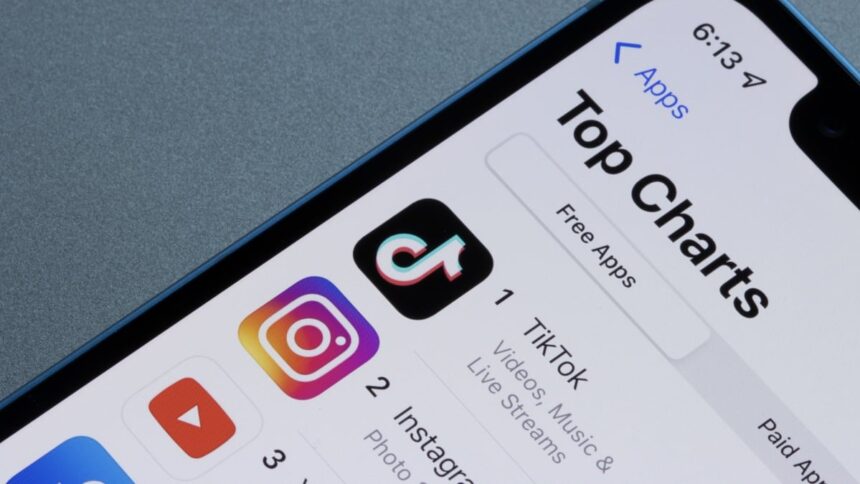The TikTok Controversy: What Users Should Know
The moment has arrived: On January 19, TikTok was officially prohibited in the United States following a decision from the Supreme Court. Consequently, TikTok removed all its applications from U.S. app stores, including well-known platforms such as CapCut and Lemon8, effectively vanishing from the digital landscape. If you happen to be among the 170 million American users who interact with TikTok daily, this news may have left you feeling discontent.
However, just hours after the ban was enacted for U.S. users, TikTok found a way back, featuring a message that expressed gratitude to “President Trump” for his endeavors—ironically coming from the same administration that initially suggested banning the app. On that day, Trump announced on Truth Social that he would issue an executive order to postpone the enforcement of the ban and to strive for a scenario where an American entity would own 50% of TikTok. Upon taking office, he followed through with that commitment. (Stay updated on the current TikTok ban situation)
Despite this temporary reprieve, the app’s future remains uncertain. Currently, TikTok’s parent company, ByteDance, must either divest its ownership or face legal repercussions in the U.S. There is also ambiguity about Trump’s capacity to temporarily halt the enforcement of this ruling; nonetheless, TikTok and similar companies are behaving as if he possesses that authority.
Should the application face a definitive ban, access won’t be entirely extinguished. While it might complicate the situation, there may still be ways to enjoy the app, at least for a period.
Reasons Behind the U.S. Ban on TikTok
The details of this situation have been thoroughly discussed in our guide, but a brief recap is warranted. Concerns around TikTok have been present since the early days of the Trump administration. The primary issue revolves around national security, as TikTok is owned by ByteDance, a firm based in China, which must adhere to Chinese regulations. Consequently, worries have arisen about ByteDance potentially sharing the data of millions of American users with the Chinese authorities or using their deeply captivating algorithm to manipulate the content that American users view.
The focal point for Congress and the President isn’t solely the app itself; their concern lies with the Chinese government. That’s partly why the “ban” is just a segment of the legislation Biden endorsed in April. This law granted ByteDance a nine-month window to secure an American buyer for TikTok. Had this occurred, ByteDance could have relinquished its stake, allowing the app to continue unhampered. However, ByteDance has declined to pursue this path, asserting that their proprietary algorithm is not for sale. Hence, we find ourselves in this predicament.
The unfolding scenario is dramatic, and the future is highly unpredictable. Should the app be rendered inoperative again, users would still possess the ability to access TikTok in a post-ban environment, provided they take specific measures.
Ensure You Retain TikTok on Your Device
Currently, TikTok is absent from U.S. app stores, meaning it cannot be downloaded legally. Searching for TikTok in the iOS App Store or Google Play Store yields alternatives or apps designed for TikTok, but not the app itself. In fact, iOS users receive a notification indicating that TikTok and ByteDance applications aren’t available in their area.
This is unsurprising, as a ban would lose its effectiveness if governments couldn’t compel companies to eliminate apps from their marketplaces. However, while authorities can restrict app availability in stores, they cannot remove applications already installed on devices. If TikTok is already on your smartphone, it will remain until manually deleted. A caveat, however: based on past experiences, restoring your phone via an old iCloud backup could disable previously installed ByteDance apps.
In essence, if TikTok is currently on your device, congratulations! If not, you may find yourself in a difficult position. Should TikTok become available in stores again, be sure to download it promptly.
Sideload TikTok (Android users only)
Historically, Android users who overlooked downloading the app prior to the ban had the option to sideload it—installing applications from unofficial sources, unlike iOS users. While Apple has begun allowing sideloading in Europe, such capabilities are still predominantly Android-exclusive. Thus, if desired, one could acquire the latest TikTok version on an Android device even when it was excluded from the Play Store.
Regrettably, this sideloading option has become less viable as well. APKMirror, a trusted site for safe app downloads on Android, has halted TikTok and Lemon8 downloads, citing the Protecting Americans from Foreign Adversary Controlled Applications Act. There is a possibility that APKMirror may lift this ban in the future, depending on the outcome of the TikTok situation, but it remains unavailable for now.
As a prudent warning, exercise caution when considering sideloading; downloading apps from unofficial sources can expose users to risks. Official channels generally provide better security, even though Google doesn’t catch every malicious app.
If opting for this route, it’s advisable to rely on well-known platforms like APKMirror to sideload safely.
Utilize a VPN for Access
If TikTok is already installed, it cannot be forcibly removed from your device, but its functionality could be compromised. After the ban, access to the TikTok network was blocked for U.S. users. Opening TikTok resulted in a message explaining the app’s ban rather than displaying the login or your tailored feed.
In the event the app becomes inaccessible again, while most users may turn to American alternatives, you could continue enjoying TikTok by utilizing a VPN.
A VPN (Virtual Private Network) allows users to bypass national or governmental restrictions on online content. It functions by encrypting your internet connection and directing it through servers located outside your country. Therefore, if the U.S. blocks TikTok, a VPN can make it appear as though you are browsing from a location like Romania, where access is still permitted.
Numerous VPN options exist, and you don’t need a premium service to keep TikTok available on your device—just a VPN that facilitates connections to countries where TikTok remains accessible, including application-level routing, not just web traffic.
Here’s the catch: based on prior experiences, it seems TikTok blocks connectivity for any accounts associated with the U.S., even when using a VPN. Thus, even if your IP appears Romanian, you may still face issues accessing the app.
One workaround is to create a new TikTok account while secured through a VPN connection to another country. In this case, TikTok may think you’re using an account registered under a different jurisdiction, enabling access without difficulty. Yet if the app detects your device’s affiliation as American, complications could still arise.
In emergency scenarios, accessing TikTok via a web browser with a functioning VPN is another option. Experiences vary by location—certain regions like Japan may not work, while others like Romania do, enabling access to content.
Using Proton VPN, which offers a quality free tier, proved effective for this situation—it supports both iOS and Android installations. The only downside is that the service selects the country automatically, necessitating a few attempts before landing on a good fit. Nevertheless, any adequately configured VPN should do the job, provided it routes through a TikTok-supported region.
Avoid Long-Term Use of the App
Even if successful in maintaining app access, utilizing it indefinitely is inadvisable.
Here’s the crux: While TikTok remains on your device if previously installed, any lack of ongoing support in the U.S. means no new updates or fixes will come your way. Consequently, glitches and crashes may increase the longer you rely on the app post-ban, and you’ll miss enhancements made elsewhere.
However, this isn’t the sole issue. Eventually, TikTok could become a significant security liability. The absence of updates means developers cannot patch any newly found vulnerabilities, and as is true with most software, they’re inevitable. Eventually, security flaws will surface, yet without updates, you’ll be utilizing an app with growing security risks, potentially making you a target.
Ironically, in the quest to eliminate TikTok over national security apprehensions, the U.S. government may transform it into a different type of security threat.
Will You Want to Keep Using TikTok?
At present, TikTok is accessible once more. But if a sale doesn’t materialize, could it disappear for good? Would users still express interest in utilizing it? Initially, the experience may feel akin to before, yet as glitches multiply and security deteriorates, its appeal could fade.
Moreover, American content creators are likely to abandon a platform deemed unavailable in their region, focusing instead on more stable platforms like Instagram and YouTube. As their numbers diminish, the familiar content you seek may dwindle, potentially found only on alternative platforms.
Globally, creators will continue utilizing TikTok, yet it will be intriguing to see whether this potential ban induces ripple effects. Might the reduction of millions of users motivate creators overseas to shift to apps accessible to Americans? If true, would TikTok see a further decline in content availability? The entire scenario is unprecedented, forcing users to stay alert and adaptive.
For now, to ensure continuous access to cherished TikTok content—even if the app becomes unavailable—download your videos promptly.












